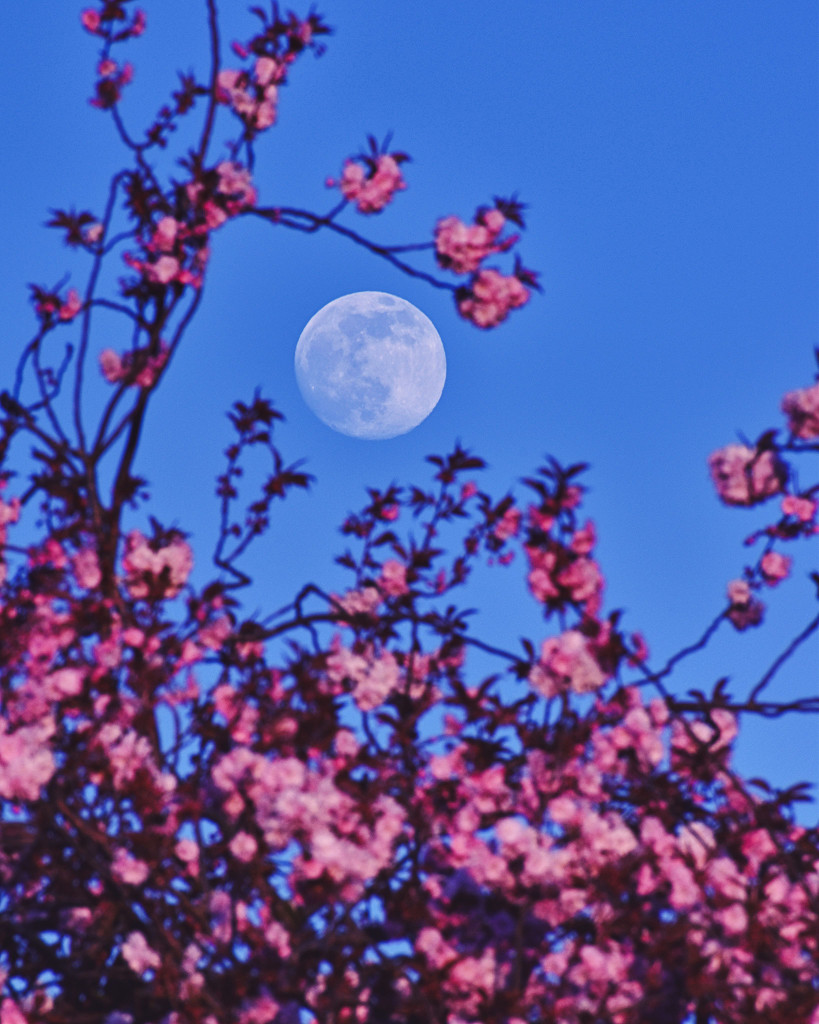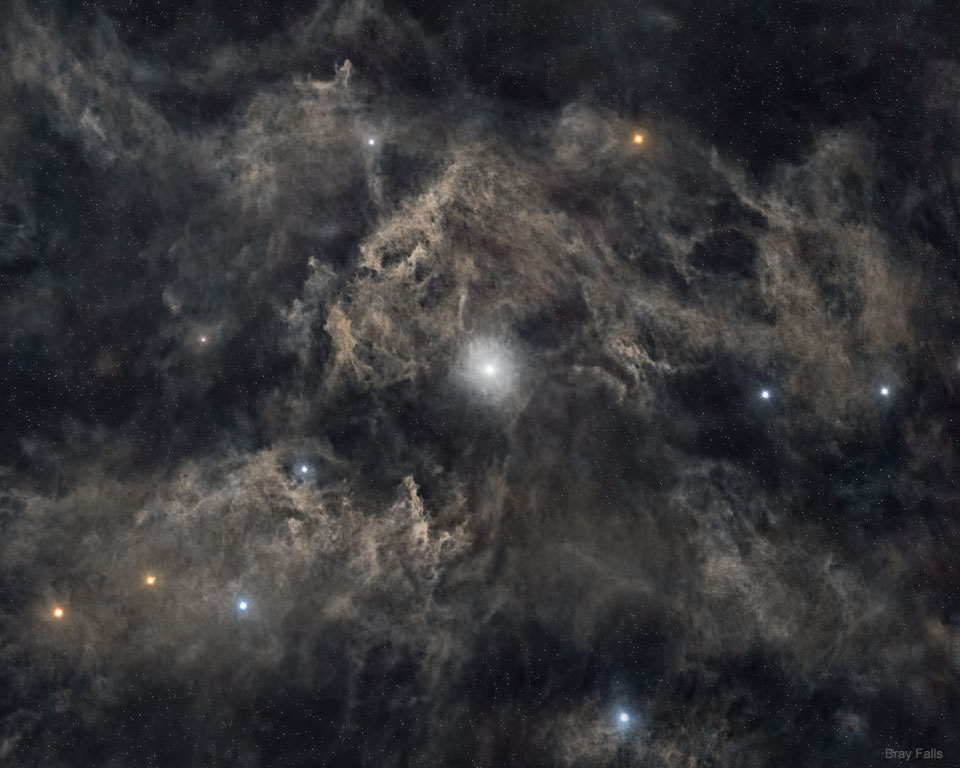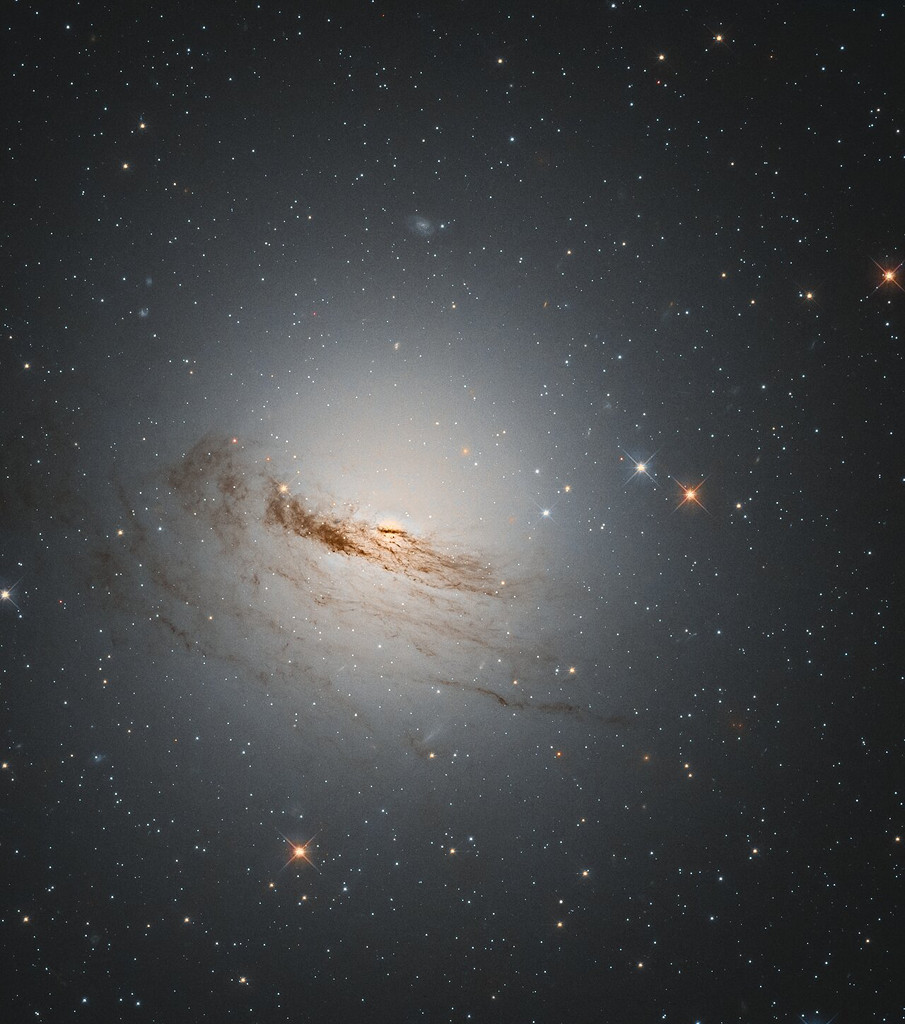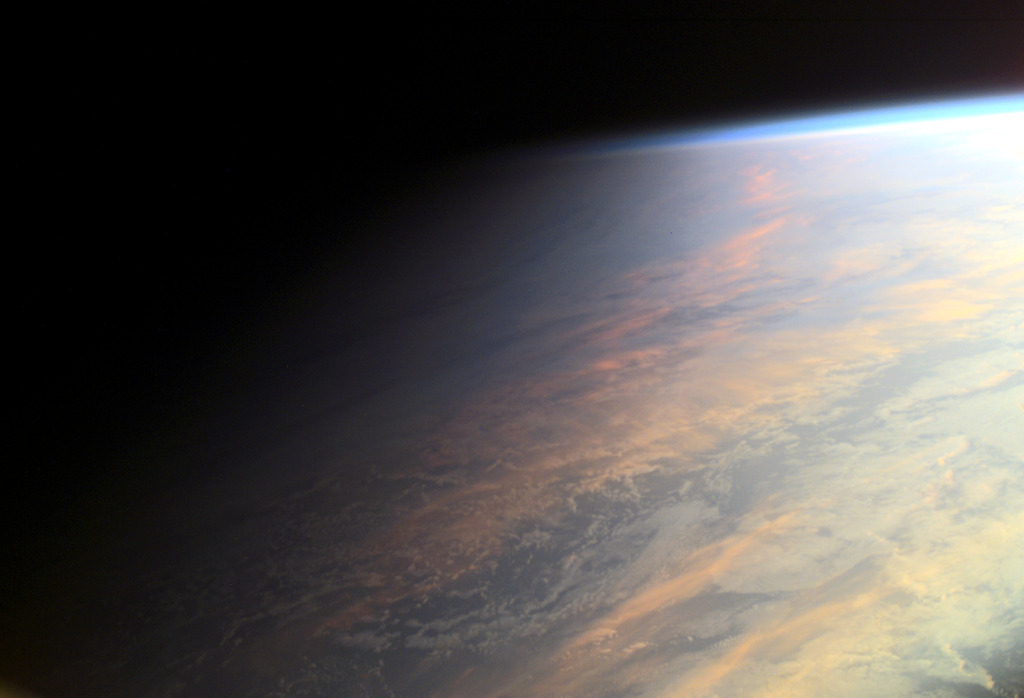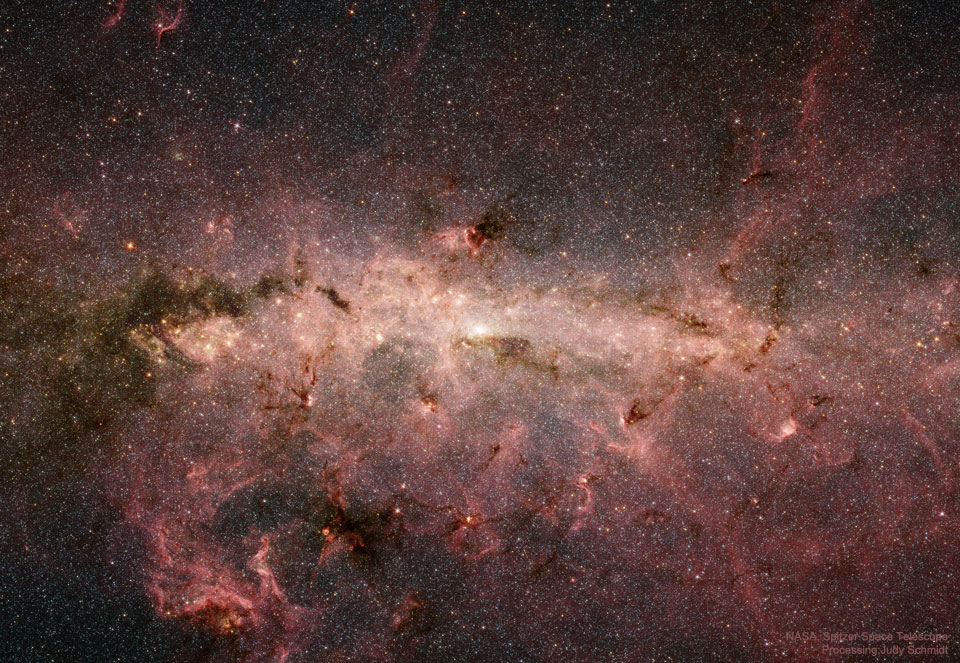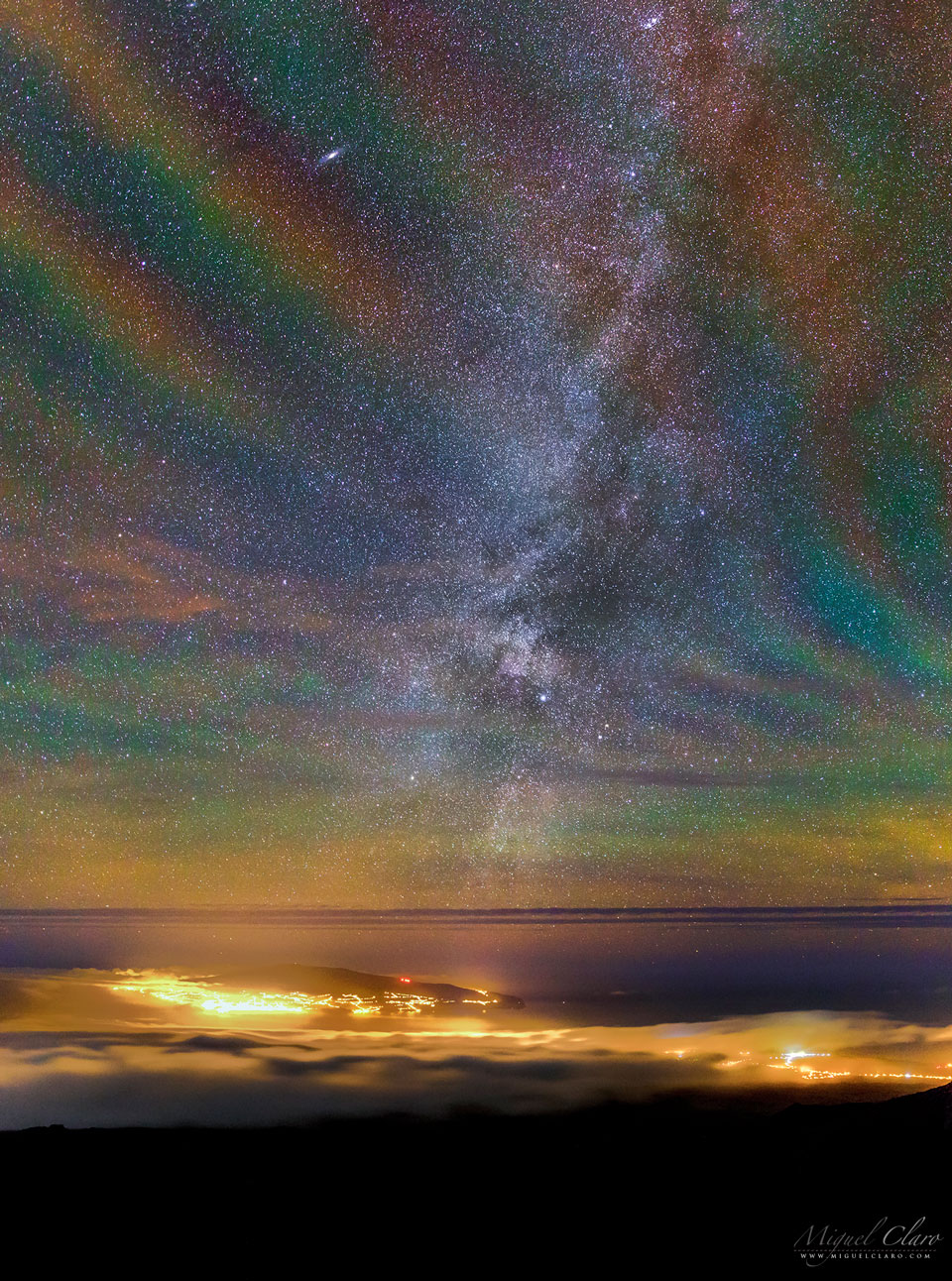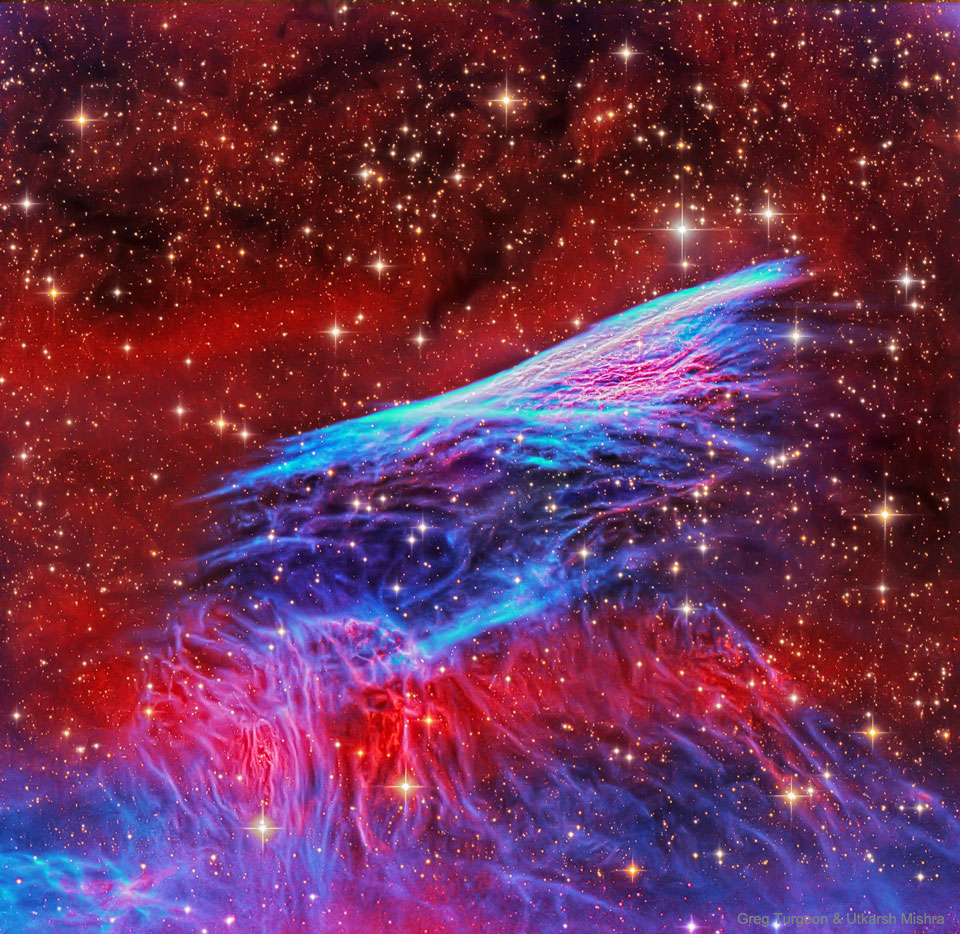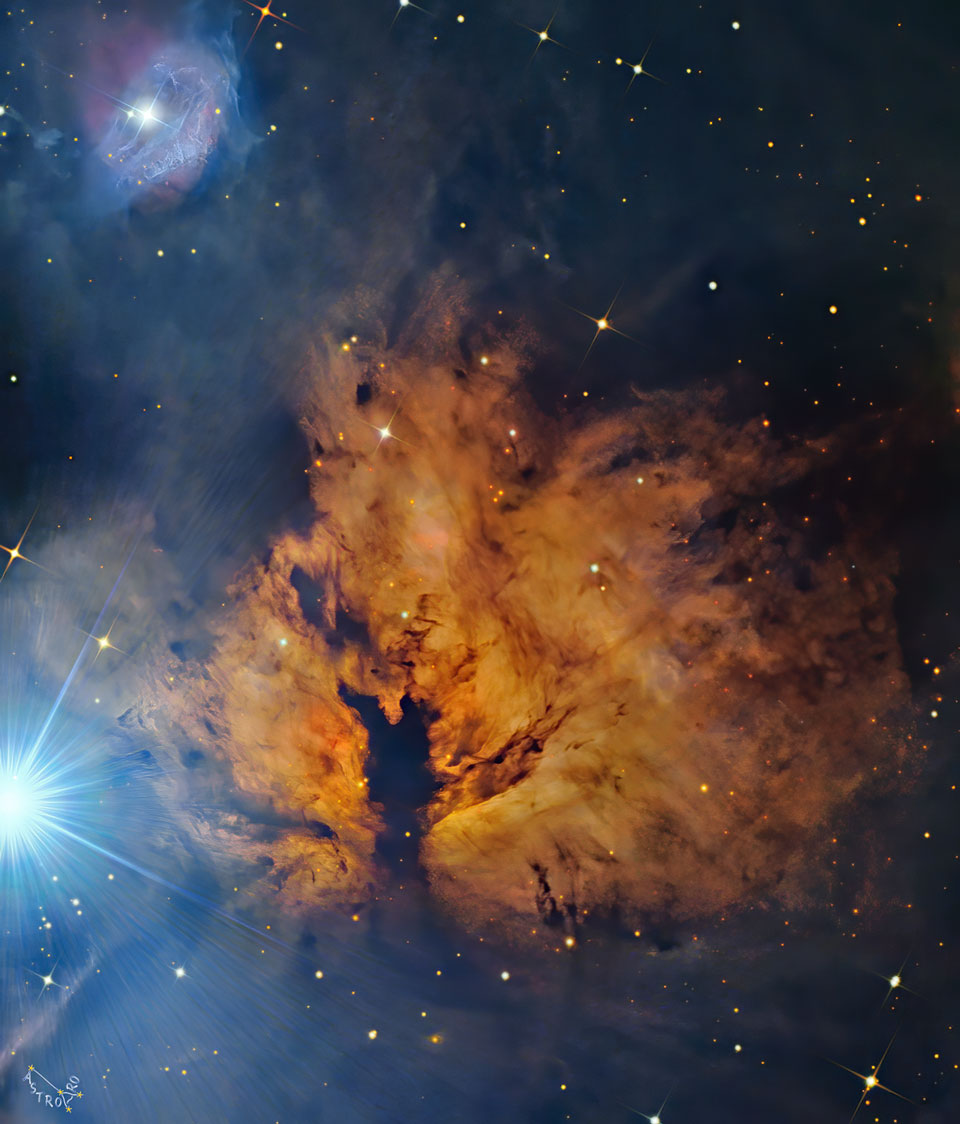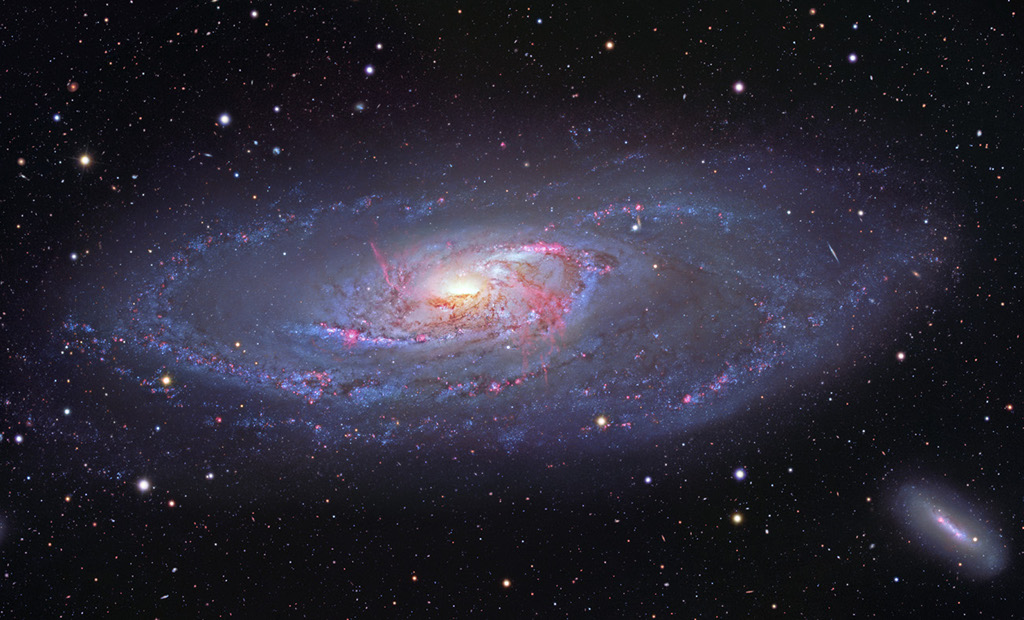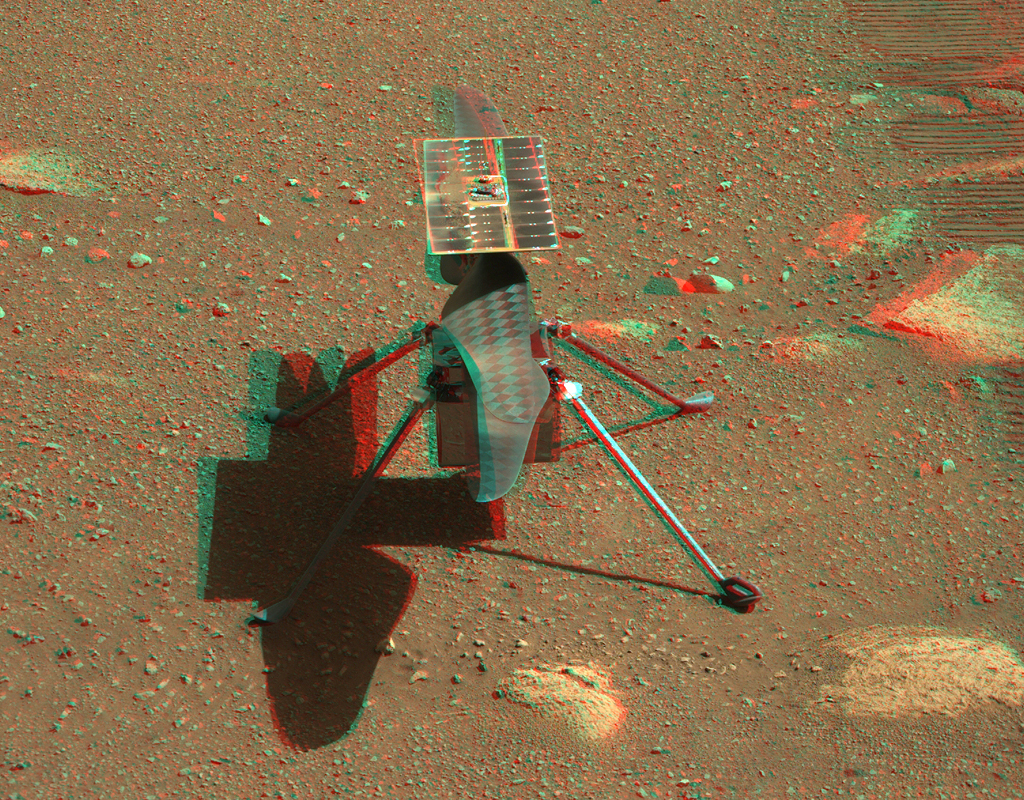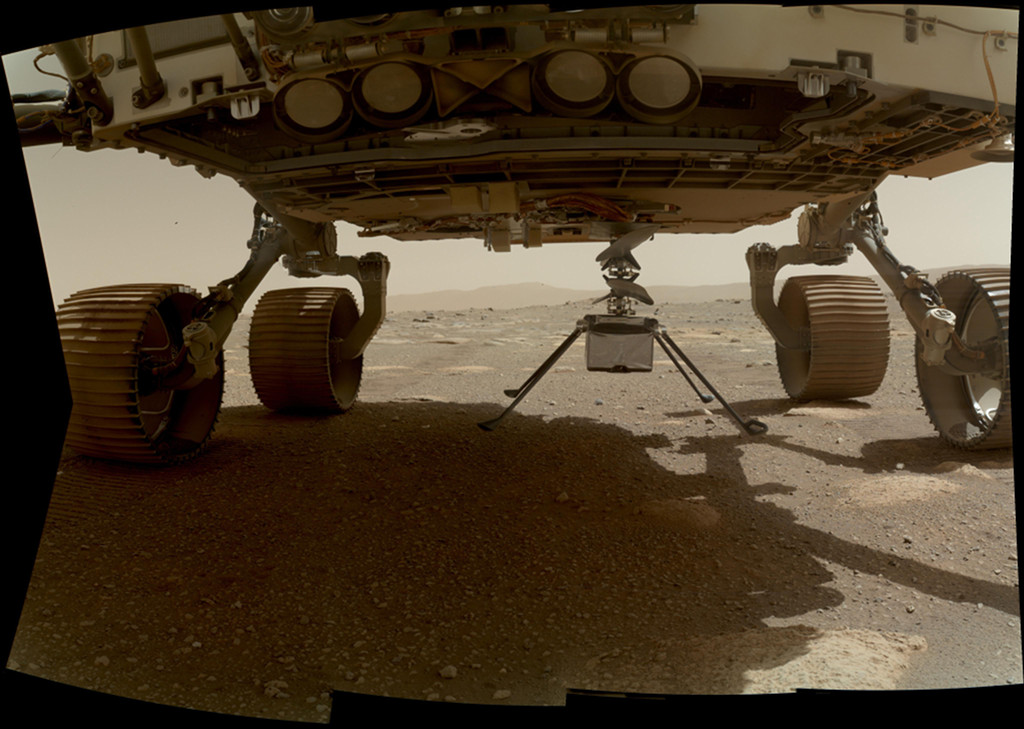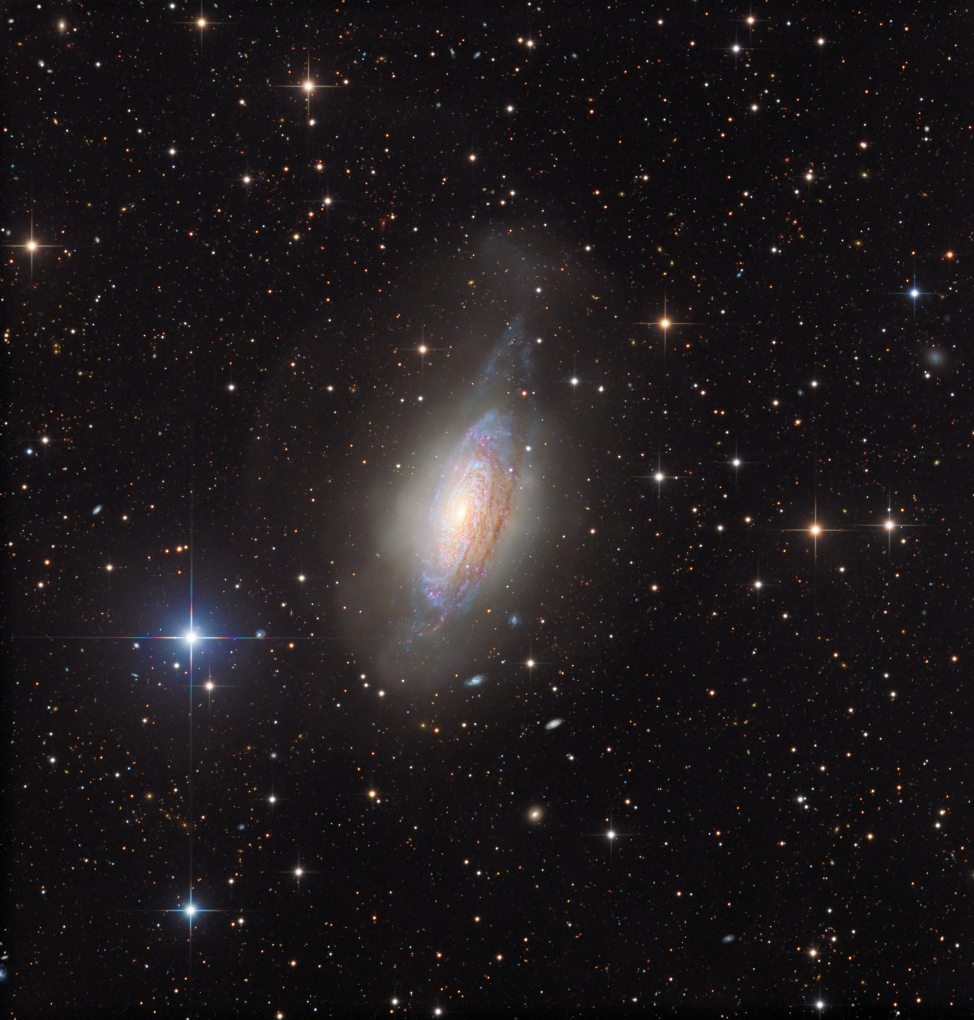Dies veut dire jour en latin donc cela veut dire jour de la Lune pour Lundi, jour de Mars pour Mardi, etc.
Nombre total de pages vues
30/04/2021
PRATIQUE/POURQUOI - Pourquoi y a t-il la syllabe ''di'' dans les jours de la semaine ?
Dies veut dire jour en latin donc cela veut dire jour de la Lune pour Lundi, jour de Mars pour Mardi, etc.
ASTRONOMY - Pink and the Perigee Moon
2021 April 30
Image Credit & Copyright: Alice Ross
Explanation: On April 25 a nearly full moon rose just before sunset. Welcomed in a clear blue sky and framed by cherry blossoms, its familiar face was captured in this snapshot from Leith, Edinburgh, Scotland. Known to some as a Pink Moon, April's full lunar phase occurred with the moon near perigee. That's the closest point in its not-quite-circular orbit around planet Earth, making this Pink Moon one of the closest and brightest full moons of the year. If you missed it, don't worry. Your next chance to see a full perigee moon will be on May 26. Known to some as a Flower Moon, May's full moon will actually be closer to you than April's by about 98 miles (158 kilometers), or about 0.04% the distance from the Earth to the Moon at perigee.
AERONAUTIQUE - L'avion automatique
29/04/2021
ASTRONOMY - Apollo 17: The Crescent Earth
2021 April 29
Image Credit: Apollo 17, NASA; Restoration - Toby Ord
Explanation: Our fair planet sports a curved, sunlit crescent against the black backdrop of space in this stunning photograph. From the unfamiliar perspective, the Earth is small and, like a telescopic image of a distant planet, the entire horizon is completely within the field of view. Enjoyed by crews on board the International Space Station, only much closer views of the planet are possible from low Earth orbit. Orbiting the planet once every 90 minutes, a spectacle of clouds, oceans, and continents scrolls beneath them with the partial arc of the planet's edge in the distance. But this digitally restored image presents a view so far only achieved by 24 humans, Apollo astronauts who traveled to the Moon and back again between 1968 and 1972. The original photograph, AS17-152-23420, was taken by the homeward bound crew of Apollo 17, on December 17, 1972. For now it's the last picture of Earth from this planetary perspective taken by human hands.
28/04/2021
PRATIQUE/POURQUOI - Pourquoi n'utilise-t-on pas les volcans comme incinérateurs d'ordures ?
ASTRONOMY - North Star: Polaris and Surrounding Dust
2021 April 28
Image Credit & Copyright: Bray Falls
Explanation: Why is Polaris called the North Star? First, Polaris is the nearest bright star toward the north spin axis of the Earth. Therefore, as the Earth turns, stars appear to revolve around Polaris, but Polaris itself always stays in the same northerly direction -- making it the North Star. Since no bright star is near the south spin axis of the Earth, there is currently no South Star. Thousands of years ago, Earth's spin axis pointed in a slightly different direction so that Vega was the North Star. Although Polaris is not the brightest star on the sky, it is easily located because it is nearly aligned with two stars in the cup of the Big Dipper. Polaris is near the center of the eight-degree wide featured image, an image that has been digitally manipulated to suppress surrounding dim stars but accentuate the faint gas and dust of the Intergalactic Flux Nebula (IFN). The surface of Cepheid Polaris slowly pulsates, causing the star to change its brightness by a few percent over the course of a few days.
27/04/2021
ASTRONOMY - Animation: Black Hole Destroys Star
2021 April 27
Video Illustration Credit: DESY, Science Communication Lab
Explanation: What happens if a star gets too close to a black hole? The black hole can rip it apart -- but how? It's not the high gravitational attraction itself that's the problem -- it's the difference in gravitational pull across the star that creates the destruction. In the featured animated video illustrating this disintegration, you first see a star approaching the black hole. Increasing in orbital speed, the star's outer atmosphere is ripped away during closest approach. Much of the star's atmosphere disperses into deep space, but some continues to orbit the black hole and forms an accretion disk. The animation then takes you into the accretion disk while looking toward the black hole. Including the strange visual effects of gravitational lensing, you can even see the far side of the disk. Finally, you look along one of the jets being expelled along the spin axis. Theoretical models indicate that these jets not only expel energetic gas, but create energetic neutrinos -- one of which may have been seen recently on Earth.
26/04/2021
PRATIQUE/POURQUOI - Pourquoi l'électricité peut-elle tuer ?
Une décharge électrique peut tuer de trois façons: brûlure, asphyxie et arrêt cardiaque. Bien que notre corps produise lui-même naturellement de l'électricité pour commander ses fonctions vitales, une trop forte intensité de courant perturbe le système. Dès 20 milliampères les muscles se contractent, risquant ainsi à bloquer la respiration: c'est l'asphyxie. Entre 100 et 300 milliampères le coeur s'emballe, de petites contractions rapides apparaissent: c'est la fibrillation, aux effets souvent irréversibles et quelquefois fatals. Soumis à des courants plus forts, le coeur ne fibrille pas mais la résistance électrique du corps s'opposant à la circulation électrique échauffe les tissus et brûle les organes.
MINERAUX - La marcassite, une cousine de la pyrite
ASTRONOMY - Threads of NGC 1947
2021 April 26
Image Credit: ESA/Hubble & NASA, D. Rosario; Acknowledgment: L. Shatz
Explanation: Found in far southern skies, deep within the boundaries of the constellation Dorado, NGC 1947 is some 40 million light-years away. In silhouette against starlight, obscuring lanes of cosmic dust thread across the peculiar galaxy's bright central regions. Unlike the rotation of stars, gas, and dust tracing the arms of spiral galaxies, the motions of dust and gas don't follow the motions of stars in NGC 1947 though. Their more complicated disconnected motion suggest this galaxy's visible threads of dust and gas may have come from a donor galaxy, accreted by NGC 1947 during the last 3 billion years or so of the peculiar galaxy's evolution. With spiky foreground Milky Way stars and even more distant background galaxies scattered through the frame, this sharp Hubble image spans about 25,000 light-years near the center of NGC 1947.
25/04/2021
ASTRONOMY - Planetary Nebula Mz3: The Ant Nebula
2021 April 25
Image Credit: R. Sahai (JPL) et al., Hubble Heritage Team, ESA, NASA
Explanation: Why isn't this ant a big sphere? Planetary nebula Mz3 is being cast off by a star similar to our Sun that is, surely, round. Why then would the gas that is streaming away create an ant-shaped nebula that is distinctly not round? Clues might include the high 1000-kilometer per second speed of the expelled gas, the light-year long length of the structure, and the magnetism of the star featured here at the nebula's center. One possible answer is that Mz3 is hiding a second, dimmer star that orbits close in to the bright star. A competing hypothesis holds that the central star's own spin and magnetic field are channeling the gas. Since the central star appears to be so similar to our own Sun, astronomers hope that increased understanding of the history of this giant space ant can provide useful insight into the likely future of our own Sun and Earth.
23/04/2021
ASTRONOMY - Flying Over the Earth at Night II
2021 April 23
Video Credit: NASA, Gateway to Astronaut Photography, ISS Expedition 53; Music: The Low Seas (The 126ers)
Explanation: Recorded during 2017, timelapse sequences from the International Space Station are compiled in this serene video of planet Earth at Night. Fans of low Earth orbit can start by enjoying the view as green and red aurora borealis slather up the sky. The night scene tracks from northwest to southeast across North America, toward the Gulf of Mexico and the Florida coast. A second sequence follows European city lights, crosses the Mediterranean Sea, and passes over a bright Nile river in northern Africa. Seen from the orbital outpost, erratic flashes of lightning appear in thunder storms below and stars rise above the planet's curved horizon through a faint atmospheric airglow. Of course, from home you can always check out the vital signs of Planet Earth Now.
22/04/2021
ASTRONOMY - Planet Earth at Twilight
2021 April 22
Image Credit: ISS Expedition 2 Crew, Gateway to Astronaut Photography of Earth, NASA
Explanation: No sudden, sharp boundary marks the passage of day into night in this gorgeous view of ocean and clouds over our fair planet Earth. Instead, the shadow line or terminator is diffuse and shows the gradual transition to darkness we experience as twilight. With the Sun illuminating the scene from the right, the cloud tops reflect gently reddened sunlight filtered through the dusty troposphere, the lowest layer of the planet's nurturing atmosphere. A clear high altitude layer, visible along the dayside's upper edge, scatters blue sunlight and fades into the blackness of space. This picture was taken in June of 2001 from the International Space Station orbiting at an altitude of 211 nautical miles. But you can check out the vital signs of Planet Earth Now.
21/04/2021
ASTRONOMY - Centaurus A's Warped Magnetic Fields
2021 April 21
Image Credit: Optical: European Southern Observatory (ESO) Wide Field Imager; Submillimeter: Max Planck Institute for Radio Astronomy/ESO/Atacama Pathfinder Experiment (APEX)/A.Weiss et al; X-ray and Infrared: NASA/Chandra/R. Kraft; JPL-Caltech/J. Keene; Text: Joan Schmelz (USRA)
Explanation: When galaxies collide -- what happens to their magnetic fields? To help find out, NASA pointed SOFIA, its flying 747, at galactic neighbor Centaurus A to observe the emission of polarized dust -- which traces magnetic fields. Cen A's unusual shape results from the clash of two galaxies with jets powered by gas accreting onto a central supermassive black hole. In the resulting featured image, SOFIA-derived magnetic streamlines are superposed on ESO (visible: white), APEX (submillimeter: orange), Chandra (X-rays: blue), and Spitzer (infrared: red) images. The magnetic fields were found to be parallel to the dust lanes on the outskirts of the galaxy but distorted near the center. Gravitational forces near the black hole accelerate ions and enhance the magnetic field. In sum, the collision not only combined the galaxies’ masses -- but amplified their magnetic fields. These results provide new insights into how magnetic fields evolved in the early universe when mergers were more common.
20/04/2021
ASTRONOMY - Ingenuity: First Flight over Mars
2021 April 20
Video Credit: NASA, JPL-Caltech, ASU, MSSS
Explanation: What's the best way to explore Mars? Perhaps there is no single best way, but a newly demonstrated method shows tremendous promise: flight. Powered flight has the promise to search vast regions and scout out particularly interesting areas for more detailed investigation. Yesterday, for the first time, powered flight was demonstrated on Mars by a small helicopter named Ingenuity. In the featured video, Ingenuity is first imaged by the Perseverance rover sitting quietly on the Martian surface. After a few seconds, Ingenuity's long rotors begin to spin, and a few seconds after that -- history is made as Ingenuity actually takes off, hovers for a few seconds, and then lands safely. More tests of Ingenuity's unprecedented ability are planned over the next few months. Flight may help humanity better explore not only Mars, but Saturn's moon Titan over the next few decades.
19/04/2021
MINERAUX - Le sélénite, une pierre de lune
ASTRONOMY - The Galactic Center in Infrared
2021 April 19
Image Credit: NASA, JPL-Caltech, Spitzer Space Telescope, Susan Stolovy (SSC/Caltech) et al.; Reprocessing: Judy Schmidt
Explanation: What does the center of our galaxy look like? In visible light, the Milky Way's center is hidden by clouds of obscuring dust and gas. But in this stunning vista, the Spitzer Space Telescope's infrared cameras, penetrate much of the dust revealing the stars of the crowded galactic center region. A mosaic of many smaller snapshots, the detailed, false-color image shows older, cool stars in bluish hues. Red and brown glowing dust clouds are associated with young, hot stars in stellar nurseries. The very center of the Milky Way has recently been found capable of forming newborn stars. The galactic center lies some 26,700 light-years away, toward the constellation Sagittarius. At that distance, this picture spans about 900 light-years.
18/04/2021
ASTRONOMY - Rainbow Airglow over the Azores
2021 April 18
Image Credit & Copyright: Miguel Claro (TWAN); Rollover Annotation: Judy Schmidt
Explanation: Why would the sky glow like a giant repeating rainbow? Airglow. Now air glows all of the time, but it is usually hard to see. A disturbance however -- like an approaching storm -- may cause noticeable rippling in the Earth's atmosphere. These gravity waves are oscillations in air analogous to those created when a rock is thrown in calm water. The long-duration exposure nearly along the vertical walls of airglow likely made the undulating structure particularly visible. OK, but where do the colors originate? The deep red glow likely originates from OH molecules about 87-kilometers high, excited by ultraviolet light from the Sun. The orange and green airglow is likely caused by sodium and oxygen atoms slightly higher up. The featured image was captured during a climb up Mount Pico in the Azores of Portugal. Ground lights originate from the island of Faial in the Atlantic Ocean. A spectacular sky is visible through this banded airglow, with the central band of our Milky Way Galaxy running up the image center, and M31, the Andromeda Galaxy, visible near the top left.
17/04/2021
ASTRONOMY - Inside the Flame Nebula
Image Credit: NASA, JPL-Caltech, IPAC Infrared Science Archive - Processing: Amal Biju
Explanation: The Flame Nebula is a stand out in optical images of the dusty, crowded star forming regions toward Orion's belt and the easternmost belt star Alnitak, a mere 1,400 light-years away. Alnitak is the bright star at the right edge of this infrared image from the Spitzer Space Telescope. About 15 light-years across, the infrared view takes you inside the nebula's glowing gas and obscuring dust clouds though. It reveals many stars of the recently formed, embedded cluster NGC 2024 concentrated near the center. The stars of NGC 2024 range in age from 200,000 years to 1.5 million years young. In fact, data indicate that the youngest stars are concentrated near the middle of the Flame Nebula cluster. That's the opposite of the simplest models of star formation for a stellar nursery that predict star formation begins in the denser center of a molecular cloud core. The result requires a more complex model for star formation inside the Flame Nebula. ...........................
15/04/2021
MINERAUX - Le béryl, un cristal d’eau de mer
ASTRONOMY - The Galaxy, the Jet, and a Famous Black Hole
2021 April 15
Image Credit: NASA, JPL-Caltech, Event Horizon Telescope Collaboration
Explanation: Bright elliptical galaxy Messier 87 (M87) is home to the supermassive black hole captured by planet Earth's Event Horizon Telescope in the first ever image of a black hole. Giant of the Virgo galaxy cluster about 55 million light-years away, M87 is the large galaxy rendered in blue hues in this infrared image from the Spitzer Space telescope. Though M87 appears mostly featureless and cloud-like, the Spitzer image does record details of relativistic jets blasting from the galaxy's central region. Shown in the inset at top right, the jets themselves span thousands of light-years. The brighter jet seen on the right is approaching and close to our line of sight. Opposite, the shock created by the otherwise unseen receding jet lights up a fainter arc of material. Inset at bottom right, the historic black hole image is shown in context, at the center of giant galaxy and relativistic jets. Completely unresolved in the Spitzer image, the supermassive black hole surrounded by infalling material is the source of enormous energy driving the relativistic jets from the center of active galaxy M87.
14/04/2021
ASTRONOMY - The Pencil Nebula Supernova Shock Wave
2021 April 14
Image Credit & Copyright: Greg Turgeon & Utkarsh Mishra
Explanation: This supernova shock wave plows through interstellar space at over 500,000 kilometers per hour. Near the middle and moving up in this sharply detailed color composite, thin, bright, braided filaments are actually long ripples in a cosmic sheet of glowing gas seen almost edge-on. Cataloged as NGC 2736, its elongated appearance suggests its popular name, the Pencil Nebula. The Pencil Nebula is about 5 light-years long and 800 light-years away, but represents only a small part of the Vela supernova remnant. The Vela remnant itself is around 100 light-years in diameter, the expanding debris cloud of a star that was seen to explode about 11,000 years ago. Initially, the shock wave was moving at millions of kilometers per hour but has slowed considerably, sweeping up surrounding interstellar material. In the featured narrow-band, wide field image, red and blue colors track, primarily, the characteristic glows of ionized hydrogen and oxygen atoms, respectively.
13/04/2021
ASTRONOMY - Zodiacal Night
Image Credit & Copyright: Jean-Francois Graffand
Explanation: An intense band of zodiacal light is captured in this serene mountain and night skyscape from April 7. The panoramic view was recorded after three hours of hiking from a vantage looking west after sunset across the Pyrenees in southern France. At 2838 meters altitude, Mont Valier is the tallest peak near center. In the sky above, the familiar stars of Orion and the northern winter Milky Way are approaching the rugged western horizon. At the shoulder of Orion, Betelgeuse is one of three bright yellowish celestial beacons. It forms a triangle with fellow red giant star Aldebaran located below Betelgeuse and to the right, and the red planet Mars. Mars shines just under the band of the Milky Way, still immersed in the bright zodiacal light.
12/04/2021
ASTRONOMY - Alnitak and the Flame Nebula
2021 April 12
Image Credit & Copyright: Team ARO
Explanation: What lights up the Flame Nebula? Fifteen hundred light years away towards the constellation of Orion lies a nebula which, from its glow and dark dust lanes, appears, on the left, like a billowing fire. But fire, the rapid acquisition of oxygen, is not what makes this Flame glow. Rather the bright star Alnitak, the easternmost star in the Belt of Orion visible on the far left, shines energetic light into the Flame that knocks electrons away from the great clouds of hydrogen gas that reside there. Much of the glow results when the electrons and ionized hydrogen recombine. The featured picture of the Flame Nebula (NGC 2024) was taken across three visible color bands with detail added by a long duration exposure taken in light emitted only by hydrogen. The Flame Nebula is part of the Orion Molecular Cloud Complex, a star-forming region that includes the famous Horsehead Nebula.
09/04/2021
ASTRONOMY - Messier 106
2021 April 9
Image Credit: NASA, Hubble Legacy Archive, Kitt Peak National Observatory;
Amateur Data & Processing Copyright: Robert Gendler
Explanation: Close to the Great Bear (Ursa Major) and surrounded by the stars of the Hunting Dogs (Canes Venatici), this celestial wonder was discovered in 1781 by the metric French astronomer Pierre Mechain. Later, it was added to the catalog of his friend and colleague Charles Messier as M106. Modern deep telescopic views reveal it to be an island universe - a spiral galaxy around 30 thousand light-years across located only about 21 million light-years beyond the stars of the Milky Way. Along with a bright central core, this stunning galaxy portrait, a composite of image data from amateur and professional telescopes, highlights youthful blue star clusters and reddish stellar nurseries tracing the galaxy's spiral arms. It also shows off remarkable reddish jets of glowing hydrogen gas. In addition to small companion galaxy NGC 4248 at bottom right, background galaxies can be found scattered throughout the frame. M106, also known as NGC 4258, is a nearby example of the Seyfert class of active galaxies, seen across the spectrum from radio to X-rays. Active galaxies are powered by matter falling into a massive central black hole.
08/04/2021
ASTRONOMY - 3D Ingenuity
2021 April 8
Image Credit: NASA, JPL-Caltech, MSSS, ASU
Explanation: The multicolor, stereo imaging Mastcam-Z on the Perseverance rover zoomed in to captured this 3D close-up (get out your red/blue glasses) of the Mars Ingenuity helicopter on mission sol 45, April 5. That's only a few sols before the technology demonstrating Ingenuity will attempt to fly in the thin martian atmosphere, making the first powered flight on another planet. The historic test flight is planned for no earlier than Sunday, April 11. Casting its shadow on the martian surface, Ingenuity is standing alone on four landing legs next to the rover's wheel tracks. The experimental helicopter's solar panel, charging batteries that keep it warm through the cold martian nights and power its flight, sits above its two 1.2 meter (4 foot) long counter-rotating blades.
05/04/2021
ASTRONOMY - Veil Nebula: Wisps of an Exploded Star
2021 April 5
Image Credit: ESA/Hubble & NASA, Z. Levay
Explanation: Wisps like this are all that remain visible of a Milky Way star. About 7,000 years ago that star exploded in a supernova leaving the Veil Nebula. At the time, the expanding cloud was likely as bright as a crescent Moon, remaining visible for weeks to people living at the dawn of recorded history. Today, the resulting supernova remnant, also known as the Cygnus Loop, has faded and is now visible only through a small telescope directed toward the constellation of the Swan (Cygnus). The remaining Veil Nebula is physically huge, however, and even though it lies about 1,400 light-years distant, it covers over five times the size of the full Moon. The featured picture is a Hubble Space Telescope mosaic of six images together covering a span of only about two light years, a small part of the expansive supernova remnant. In images of the complete Veil Nebula, even studious readers might not be able to identify the featured filaments.
03/04/2021
ASTRONOMY - Ingenuity on Sol 39
2021 April 3
Image Credit: NASA / JPL-Caltech / MSSS
Explanation: The Mars Ingenuity Helicopter, all four landing legs down, was captured here on sol 39 (March 30) slung beneath the belly of the Perseverance rover. The near ground level view is a mosaic of images from the WATSON camera on the rover's SHERLOC robotic arm. Near the center of the frame the experimental helicopter is suspended just a few centimeters above the martian surface. Tracks from Perseverance extend beyond the rover's wheels with the rim of Jezero crater visible about 2 kilometers in the distance. Ingenuity has a weight of 1.8 kilograms or 4 pounds on Earth. That corresponds to a weight of 0.68 kilograms or 1.5 pounds on Mars. With rotor blades spanning 1.2 meters it will attempt to make the first powered flight of an aircraft on another planet in the thin martian atmosphere, 1 percent as dense as Earth's, no earlier than April 11.
02/04/2021
ASTRONOMY - NGC 3521: Galaxy in a Bubble
2021 April 2
Image Credit & Copyright: Acquisition - Eric Benson, Processing - Dietmar Hager
Explanation: Gorgeous spiral galaxy NGC 3521 is a mere 35 million light-years away, toward the constellation Leo. Relatively bright in planet Earth's sky, NGC 3521 is easily visible in small telescopes but often overlooked by amateur imagers in favor of other Leo spiral galaxies, like M66 and M65. It's hard to overlook in this colorful cosmic portrait, though. Spanning some 50,000 light-years the galaxy sports characteristic patchy, irregular spiral arms laced with dust, pink star forming regions, and clusters of young, blue stars. Remarkably, this deep image also finds NGC 3521 embedded in gigantic bubble-like shells. The shells are likely tidal debris, streams of stars torn from satellite galaxies that have undergone mergers with NGC 3521 in the distant past.
01/04/2021
ASTRONOMY - Rocket Launch as Seen from the Space Station
2021 April 1
Video Credit: ISAA, NASA, Expedition 57 Crew (ISS);
Processing: Riccardo Rossi (ISAA, AstronautiCAST); Music: Inspiring Adventure Cinematic Background by Maryna
Explanation: Have you ever seen a rocket launch -- from space? A close inspection of the featured time-lapse video will reveal a rocket rising to Earth orbit as seen from the International Space Station (ISS). The Russian Soyuz-FG rocket was launched in November 2018 from the Baikonur Cosmodrome in Kazakhstan, carrying a Progress MS-10 (also 71P) module to bring needed supplies to the ISS. Highlights in the 90-second video (condensing about 15-minutes) include city lights and clouds visible on the Earth on the lower left, blue and gold bands of atmospheric airglow running diagonally across the center, and distant stars on the upper right that set behind the Earth. A lower stage can be seen falling back to Earth as the robotic supply ship fires its thrusters and begins to close on the ISS, a space laboratory that celebrated its 20th anniversary in 2018. Astronauts who live aboard the Earth-orbiting ISS conduct, among more practical duties, numerous science experiments that expand human knowledge and enable future commercial industry in low Earth orbit.
SANTé/MEDECINE - Virus et bactéries mortels - Le virus de la rage
Grâce aux travaux de Louis Pasteur , la rage a très nettement reculé dans le monde. On dénombre tout de même plus de 50.000 morts humains s...

-
2021 May 11 Lightning and Orion Beyond Uluru Image Credit & Copyright: Park Liu Explanation: What's happening behind Uluru? A Un...
-
The Witch Head Nebula Image Credit & Copyright: Digitized Sky Survey (POSS II); Processing: Utkarsh Mishra Explanation: ...

